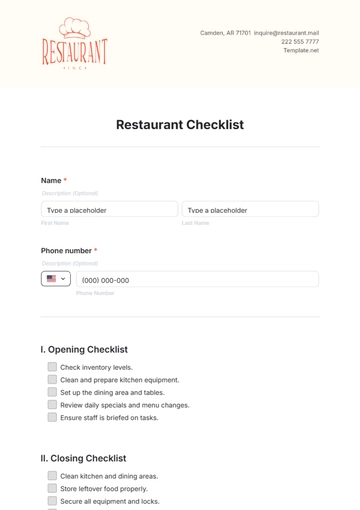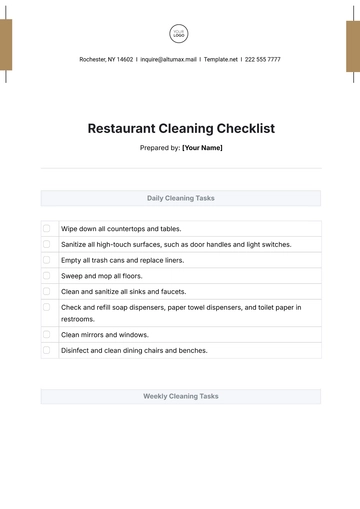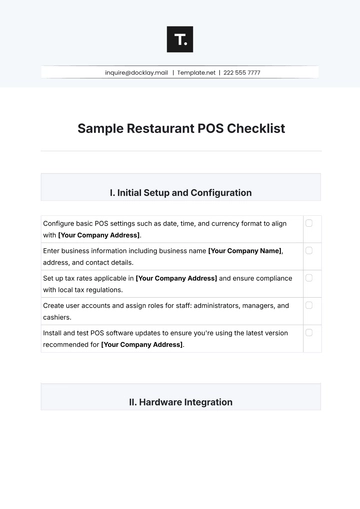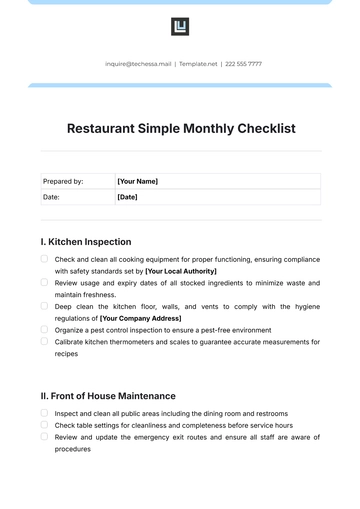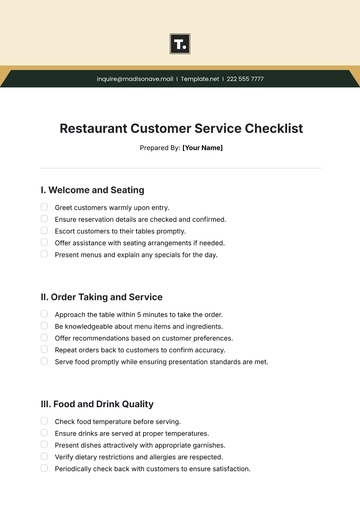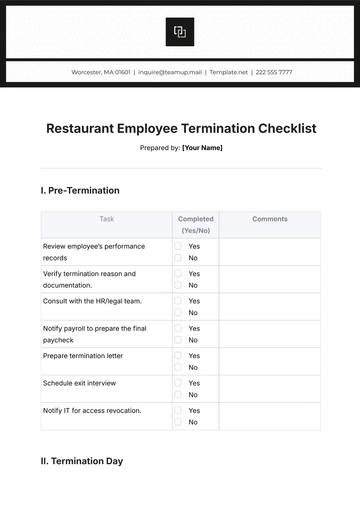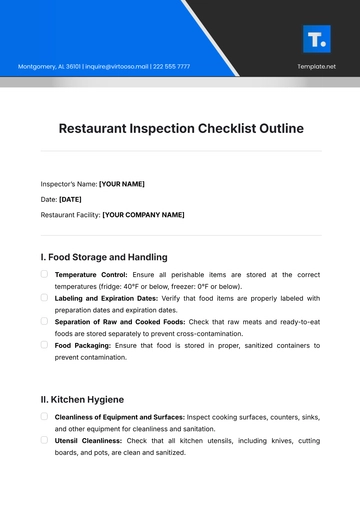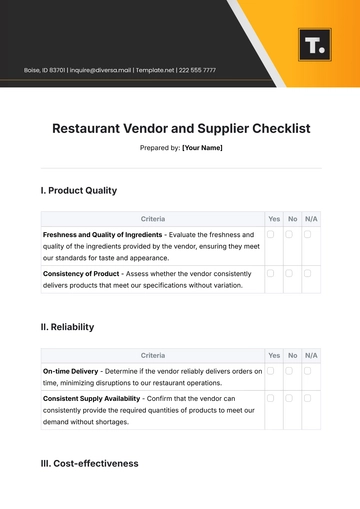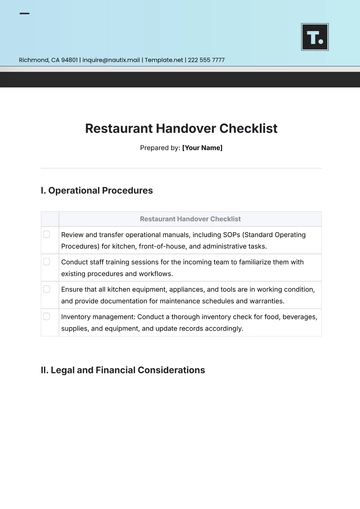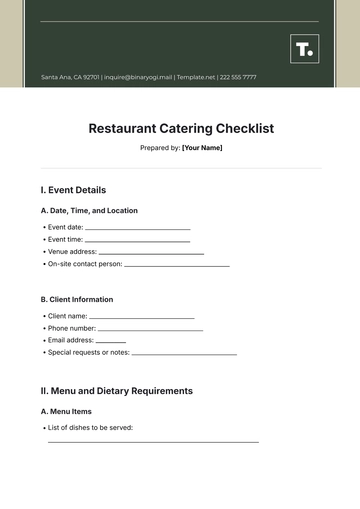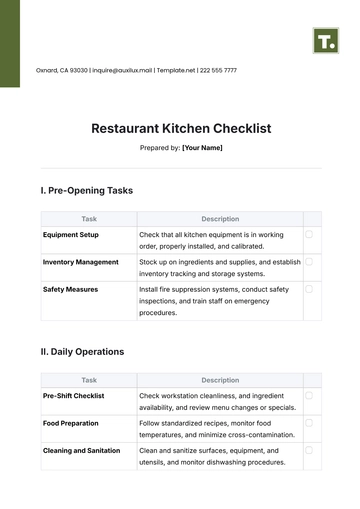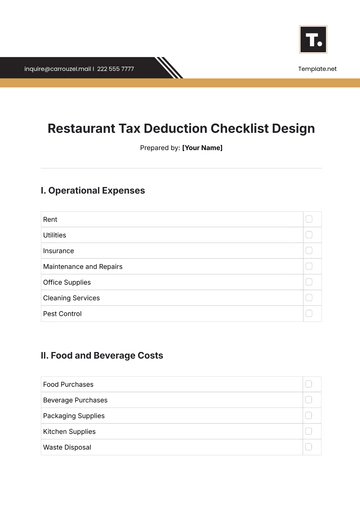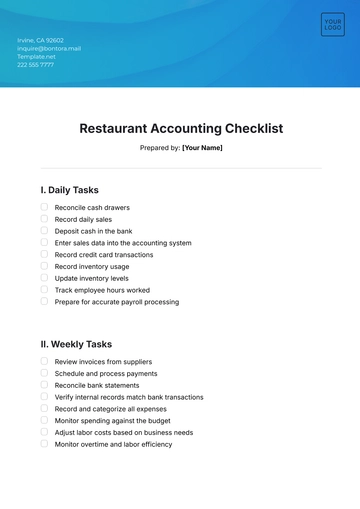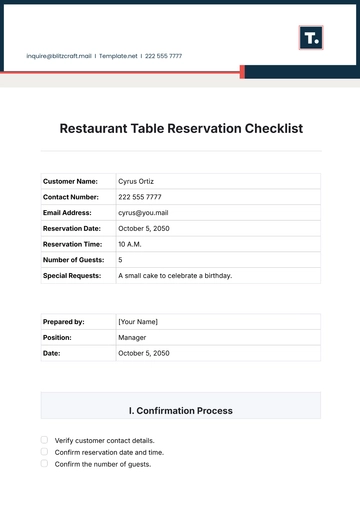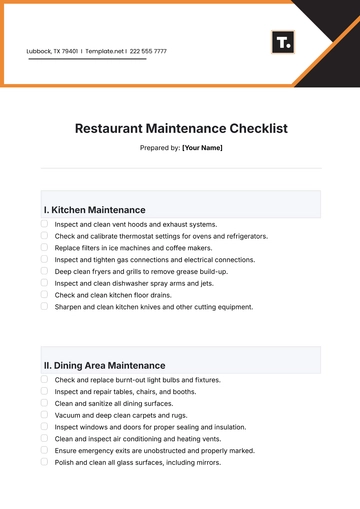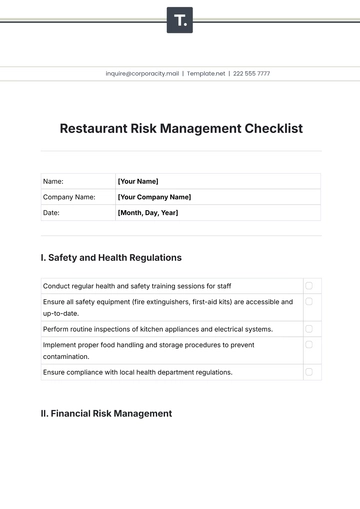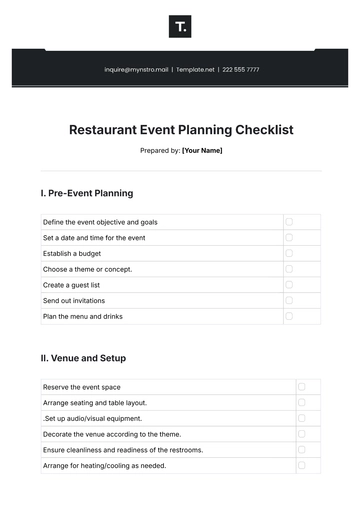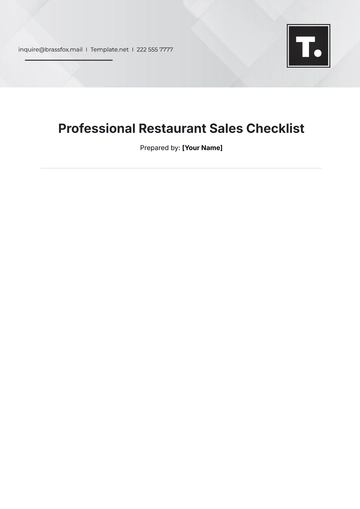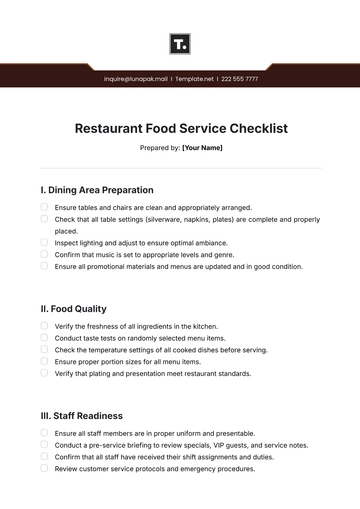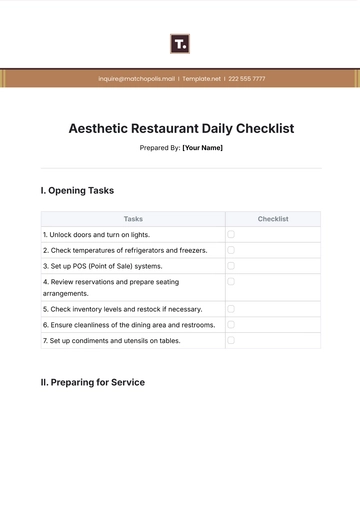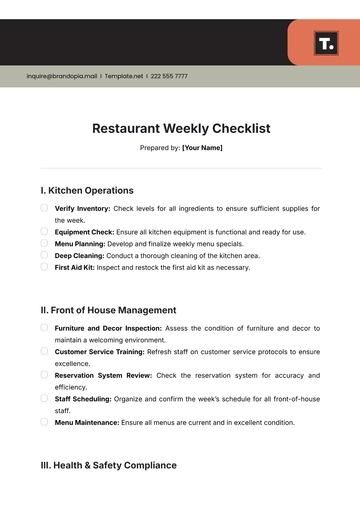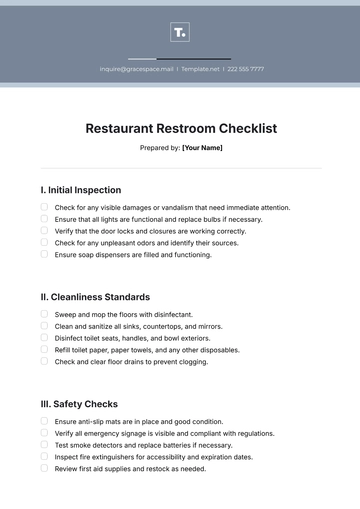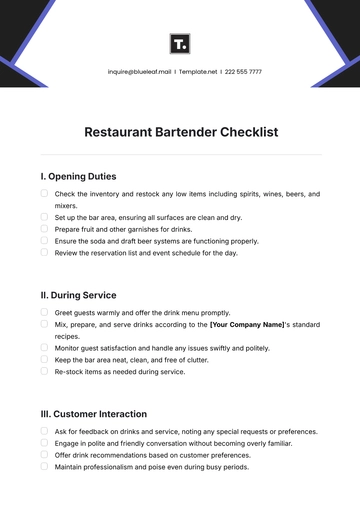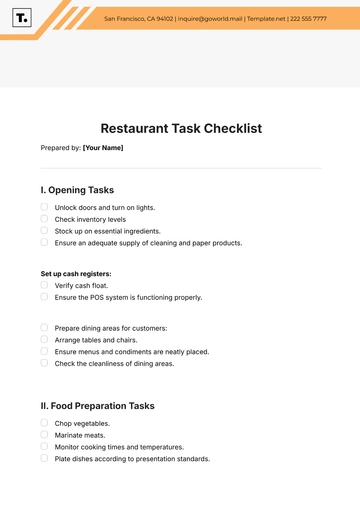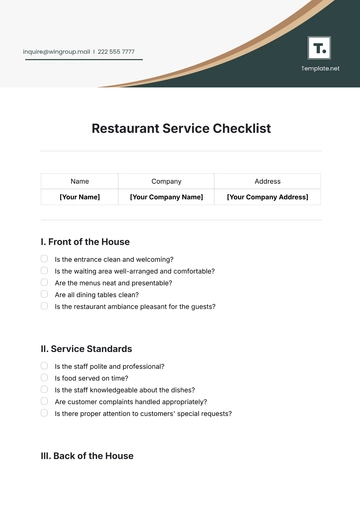Free Restaurant Compliance Checklist Layout
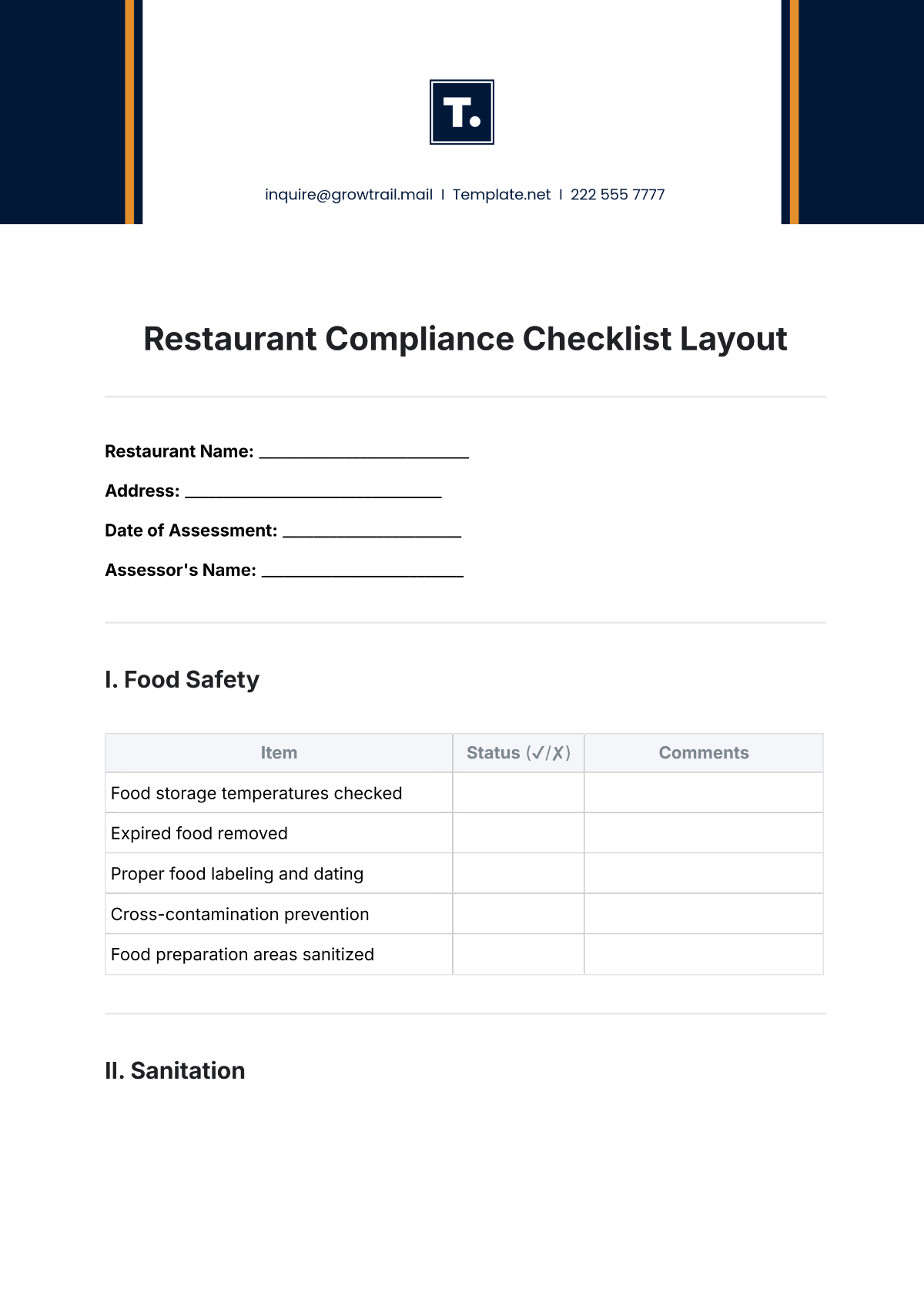
Restaurant Name: ___________________________
Address: _________________________________
Date of Assessment: _______________________
Assessor's Name: __________________________
I. Food Safety
Item | Status (✔/✘) | Comments |
|---|---|---|
Food storage temperatures checked | ||
Expired food removed | ||
Proper food labeling and dating | ||
Cross-contamination prevention | ||
Food preparation areas sanitized |
II. Sanitation
Item | Status (✔/✘) | Comments |
|---|---|---|
Equipment cleaned after use | ||
Restrooms cleaned and stocked. | ||
Garbage bins were emptied and cleared. | ||
Handwashing stations accessible |
III. Health Code Requirements
Item | Status (✔/✘) | Comments |
|---|---|---|
Pest control measures in place | ||
Waste disposal meets regulations. | ||
Clean water supply available | ||
No visible signs of contamination |
IV. Fire Safety
Item | Status (✔/✘) | Comments |
|---|---|---|
Fire extinguishers inspected | ||
Emergency exits unobstructed | ||
Fire safety signage is visible. | ||
Fire alarm system operational |
V. Employee Practices
Item | Status (✔/✘) | Comments |
|---|---|---|
Employees wearing proper uniforms | ||
Personal hygiene maintained | ||
Proper food handling techniques | ||
Employee training up-to-date |
VI. Licensing and Permits
Item | Status (✔/✘) | Comments |
|---|---|---|
Operating permits valid | ||
Alcohol license valid (if applicable) | ||
Inspection certificates displayed |
VII. Facility Maintenance
Item | Status (✔/✘) | Comments |
|---|---|---|
Adequate lighting in work areas | ||
Plumbing systems functioning | ||
Ventilation and HVAC operational | ||
No structural damage or hazards |
Final Notes/Recommendations:

Assessor Name: __________________________
Date Signed: __________________________
- 100% Customizable, free editor
- Access 1 Million+ Templates, photo’s & graphics
- Download or share as a template
- Click and replace photos, graphics, text, backgrounds
- Resize, crop, AI write & more
- Access advanced editor
Ensure regulatory compliance effortlessly with Template.net's Restaurant Compliance Checklist Layout Template. This editable and customizable tool covers essential areas like safety standards and health inspections. Designed for quick updates in our Ai Editor Tool, it features a clear, organized layout to help your restaurant meet industry requirements efficiently and seamlessly. Stay compliant with ease using this versatile template.
You may also like
- Cleaning Checklist
- Daily Checklist
- Travel Checklist
- Self Care Checklist
- Risk Assessment Checklist
- Onboarding Checklist
- Quality Checklist
- Compliance Checklist
- Audit Checklist
- Registry Checklist
- HR Checklist
- Restaurant Checklist
- Checklist Layout
- Creative Checklist
- Sales Checklist
- Construction Checklist
- Task Checklist
- Professional Checklist
- Hotel Checklist
- Employee Checklist
- Moving Checklist
- Marketing Checklist
- Accounting Checklist
- Camping Checklist
- Packing Checklist
- Real Estate Checklist
- Cleaning Checklist Service
- New Employee Checklist
- Food Checklist
- Home Inspection Checklist
- Advertising Checklist
- Event Checklist
- SEO Checklist
- Assessment Checklist
- Inspection Checklist
- Baby Registry Checklist
- Induction Checklist
- Employee Training Checklist
- Medical Checklist
- Safety Checklist
- Site Checklist
- Job Checklist
- Service Checklist
- Nanny Checklist
- Building Checklist
- Work Checklist
- Office Checklist
- Training Checklist
- Website Checklist
- IT and Software Checklist
- Performance Checklist
- Project Checklist
- Startup Checklist
- Education Checklist
- Home Checklist
- School Checklist
- Maintenance Checklist
- Planning Checklist
- Manager Checklist
- Wedding Checklist
- Vehicle Checklist
- Travel Agency Checklist
- Vehicle Inspection Checklist
- Interior Design Checklist
- Backpacking Checklist
- Business Checklist
- Legal Checklist
- Nursing Home Checklist
- Weekly Checklist
- Recruitment Checklist
- Salon Checklist
- Baby Checklist
- Equipment Checklist
- Trade Show Checklist
- Party Checklist
- Hospital Bag Checklist
- Evaluation Checklist
- Agency Checklist
- First Apartment Checklist
- Hiring Checklist
- Opening Checklist
- Small Business Checklist
- Rental Checklist
- College Dorm Checklist
- New Puppy Checklist
- University Checklist
- Building Maintenance Checklist
- Work From Home Checklist
- Student Checklist
- Application Checklist
